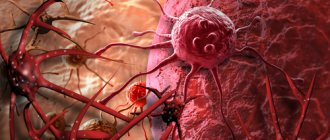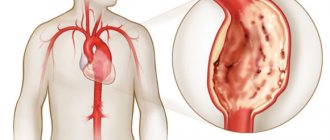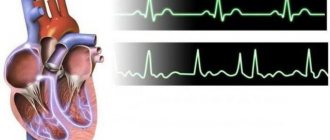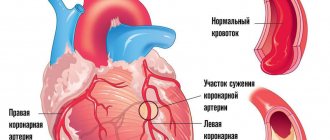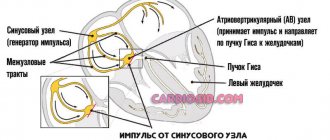What is the disease?
Chronic leukemia is a type of blood cancer. The course of the disease can continue for fifteen to twenty years. Typically, chronic leukemia affects older people, less often middle-aged people. Chronic leukemia is even less common in children.
The disease affects the following white blood cells:
- Lymphocytes,
- Granulocytes.
The main task of white cells is to counteract viruses that cause diseases, fungal and bacterial infections.
Now there are two types of chronic leukemia:
- Chronic lymphocytic leukemia,
- Chronic myeloid leukemia.
In leukemia of the lymphocytic type, lymphocytes are damaged. If a diagnosis of myeloid leukemia is made, the damage has occurred to granulocytes. The task of the latter is to cleanse the human body not only of pathogenic microorganisms, but also of any foreign fragments and elements.
Granulocytes absorb microbes and foreign elements. Lymphocytes produce special antibodies to suppress the activity of the infecting factor.
Chronic lymphocytic leukemia is characterized by the production of immature leukocytes with a reduced level of functionality. The production of white cells is disrupted, and the body cannot fully fight the infection. Lymphocytic leukemia and myeloid leukemia, the picture of which also applies to other blood cells - erythrocytes and platelets.
The former are responsible for the transfer of oxygen from the lungs to the organs. Platelets - for the clotting factor.
Leukemia
What is leukemia
This is an oncological disease that most often affects the adult population of our planet, although children are not left out. It extends to the lymphatic, hematopoietic system, including such an important organ as the bone marrow.
Unfortunately, statistics do not provide reassuring information: out of 100% of people who fall ill, 79-80 cannot cope with the disease and its complications. The course can be acute or chronic. In simple language the name will sound like “bleeding”. People over 55 years of age are especially susceptible to a difficult diagnosis. In such cases, a malignant lesion rapidly invades the bone marrow of older people: acute myeloblastic leukemia. At a younger age, the chronic form is typical.
This is interesting! There is a version that the cause of cancer is helminthic infestations that destroy the human immune system. Worms are very dangerous to health and must be dealt with at the first sign.
Etiology of chronic leukemia
There are several options for the development of chronic leukemia. The viral genetic theory has received the greatest development among researchers.
In it, a significant role is given to the mutation of a number of viruses, which, penetrating into the blood, can disrupt the function of hematopoiesis:
- Herpetic viruses,
- Epstein-Barr virus,
- Cytomegalovirus,
- Influenza viruses.
The results of experiments, tests and studies have shown that monocytic and lymphocytic leukemia in their development are dependent on a certain anomaly affecting the 22nd pair of chromosomes.
The 22nd pair of human chromosomes is called the Philadelphia chromosome.
Chronic leukemia is dependent on the body's exposure to radiation and ionizing radiation (X-ray radiation). Research has confirmed that cancer formations in white blood cells can be caused by the influence of industrial waste and even household toxic chemicals.
The factor of development of chronic leukemia due to the use of certain medications causes concern. Some medicines may contain gold salts. Other groups include cytostatics and antibiotics.
In addition to the viral genetic theory, there is also an immune theory.
It reliably confirms the connection between lymphocytic leukemia and the following diseases and pathologies of the immune system:
- Hemolytic anemia of the autoimmune type,
- Collagenoses,
- Thrombocytopenia.
In chronic and acute leukemia, functionality is lost by leukocytes. This threatens the body with a lack of protection from infectious factors, both external and internal.
Causes
Scientists and doctors are still arguing about what exactly influences the occurrence of cancerous and malignant cells. But most doctors are already on the path to discovery, since most believe that both acute and chronic forms of leukemia arise as a result of pathology at the level of chromosomes within cells.
Recently, scientists discovered the so-called “Philadelphia chromosome”, which is located in the bone marrow and can lead to blood cancer - a mutation of red bone marrow cells. But as studies have shown, this chromosome becomes acquired during a person’s life, that is, it cannot be obtained from parents.
Acute myeloid leukemia occurs in people with Bloom syndrome, Down syndrome, Fanconi anemia, and in patients with Wiskott-Aldrich syndrome. Let's take a closer look at all the other factors that may influence the occurrence of this disease:
- Smoking. Cigarette smoke contains a huge amount of chemicals that directly affect blood cells when inhaled.
- Alcohol and nutrition. One of the endogenous factors that affect the entire body and every cell. In people with poor nutrition and problems with alcohol, the risk of developing cancer of any class increases by one and a half times.
- Working with hazardous chemicals. People who work in factories, laboratories, or with plastic, gasoline, or other petroleum products have an increased chance of getting sick.
- Chemotherapy and Radiotherapy. It happens that when treating a tumor, complications arise and another cancer appears.
- Immune deficiency . Any disease that weakens the immune system can lead to cancer.
- Genetics. Children whose parents had leukemia have a higher chance of getting the disease than the average child. Such people are usually included in the risk group, and they must undergo the necessary examinations annually.
To put it simply, first there is some external or internal effect on the cell. Then inside at the chromosomal level, it changes and mutates. After this cell divides, there are more of them. When a mutation occurs, the division program breaks down, and the cells themselves begin to divide faster. The death program also breaks down, and as a result they become immortal. And all this happens in tissues in the red bone marrow, which reproduce blood cells.
As a result, the tumor itself begins to produce underdeveloped leukocytes, which simply fill all the blood. They interfere with the work of red blood cells and platelets. And later there are many times fewer red blood cells.
How are chronic leukemias classified?
The classification of chronic leukemia begins with the division of pathology according to the principle of the predominant composition of affected cells. Previously, we distinguished lymphocytic and myeloid chronic leukemia.
According to data, lymphocytic leukemia occurs twice as often as myeloid leukemia. Chronic lymphocytic leukemia occurs more often in men than in women.
Chronic myeloid leukemia accounts for 15% of the total number of cases. In the process, the number of granulocytes increases.
This group of white blood cells includes:
- Basophils,
- Neutrophils,
- Eosinophils.
| Type of chronic leukemia | Forms of chronic leukemia |
| Chronic lymphocytic leukemia | 1.Prolymphocytic |
| 2. Hairy cell | |
| 3.T-cell | |
| Chronic myelomonocytic leukemia | 1.Initial form |
| 2.Form of the expanded clinic | |
| 3. Terminal stage of the disease. |
The type of a particular chronic leukemia is identified based on the signs and severe symptoms. The blood picture must be examined.
Types of leukemia
The division of leukemia into types occurs depending on the cellular substrate and origin.
Lymphocytic leukemia
It is more common in people over 40 years of age. Men are affected 2 times more often than women. During the examination, the following symptoms clearly predominate:
- anemia (often autoimmune);
- lymphadenopathy;
- granulocypenia;
- thrombocypenia;
- immunosuppression;
- predisposition to viral and infectious diseases.
Lymphocytic leukemia is most often found in men over 40 years of age.
The prognosis for the disease is good. The course is long, but with a successful outcome.
Myelocytic leukemia
Contains tumor cells such as cytic or procytic precursors of the myeloid series. Malignant transformation possibly occurs in a pluripotent stem cell.
This type of disease is the most interesting to study. It is not so rare, it occurs in about 15% of cases of all leukemia. The occurrence is diagnosed in people of any age, but predominates in the male population. The causes are the same as the acute form of the disease.
Monocytic leukemia
A blood test reveals a higher level of monocytes. In this case, the level of leukocytes is normal or not very pronounced. Promonocytes also enter the bloodstream, which leads to decreased immunity and secondary infection.
This disease is caused by several factors:
- decreased blood clotting;
- anemia;
- frequent causeless bleeding;
- oxygen starvation.
With timely and correct treatment, the prognosis is quite good. But otherwise, death is possible.
Clinical picture of chronic lymphocytic leukemia
Since symptoms do not appear in any way at the initial stage, it is almost impossible to establish it. For several years the patient may not be bothered by anything.
Typically, studies are prescribed after complaints of the following types of ailments:
- Weakness for no reason
- High degree of fatigue,
- Loss of body weight,
- Excessive sweating.
Each of these signs is characteristic of the initial stage of development in chronic lymphocytic leukemia. The second stage of the disease develops against the background of adenopathy and enlarged lymph nodes. Rarely do both signs appear at the same time. Most often, it is the enlargement of the lymph nodes up to ten centimeters in size.
When the lymph nodes enlarge, a person does not experience pain or specific discomfort. Ulcers and suppuration also do not appear. X-ray examination makes it possible to detect enlarged lymph nodes in various parts of the body.
Most often, the lymph nodes located in the armpits, groin and cervical areas become inflamed.
When lymph nodes become enlarged, they can put pressure on internal organs.
This causes symptoms such as:
- Dyspnea,
- Cough,
- Pain in the abdominal area,
- Venous edema.
In some patients, the spleen becomes enlarged. But the increase is moderate. There may be an increase in the size and density of the liver.
During the disease, specific leukemic infiltrates appear in the lung tissue, gastric mucosa, kidneys and heart. Their occurrence is accompanied by inflammation and ulcers.
This factor causes the following diseases and symptoms:
- Pneumonia,
- Inflammation of the intestines, accompanied by diarrhea and bleeding,
- Blood in urine
- Myocarditis.
Such growths are often mistaken for neoplasms in the stomach and a number of other organs.
Leukolysis is characterized by manifestations on the skin.
They differ from each other in cell composition. Highlight:
- Leukemoid formations,
- Non-specific varieties.
The first are either lymphomas or manifestations of erythroderma. In this case, lymphomas refer to specific infiltrates. Lymphoma skin lesions resemble leprosy in appearance. Erythroderma causes the skin to become red, itchy, and flaky. Nonspecific types of skin lesions include pemphigus, herpes zoster and a number of others.
Chronic lymphocytic leukemia significantly reduces immunity levels. The patient suffers from frequent infectious infections, which are accompanied by complications. If the infection is acute, it easily changes its specification to chronic.
At the terminal stage, the spleen increases significantly in size. The process may be accompanied by heart attacks. Anemia increases due to repeated bleeding. This is also facilitated by inhibition of the hematopoietic process. The nature of anemia is hemolytic autoimmune. The body begins to actively produce antibodies against its own platelets and red blood cells. Blood cells self-destruct. The main cause of death is blood poisoning.
Chronic leukemia
Clinical forms
Depending on the symptoms, there are several forms of chronic lymphocytic leukemia. All forms are quite common.
Among them:
- Benign form,
- Bone marrow form
- malignant form,
- cutaneous form,
- Local adenopathy,
- Splenomegalic form.
In a benign course, the enlargement of the lymph nodes and spleen is moderate. The number of platelets and red blood cells does not change. Infectious complications occur quite rarely.
In young patients, a malignant form of lymphocytic leukemia is most often observed. The course of the disease is rapid and difficult.
The size of the inflammation of the lymph nodes is significant. Inflammations can combine with each other. Infection with carriers of infections leads to sepsis.
Location of lymph nodes in humans
The bone marrow form is characterized by a sharp impairment of hematopoietic function in the bone marrow tissues. The spleen and lymph nodes are not inflamed. Simultaneously with the disturbance of hematopoiesis, anemia appears, followed by thrombocytopenia.
In the cutaneous form, numerous lymphomas appear on the body. The volume of T-lymphocytes increases. Leukocyte formula – 35%. Local adenopathy is characterized by enlargement of the cervical, abdominal and retrosternal lymph nodes, and the symptoms will depend on where exactly the lesion is concentrated.
Blood picture
The number of leukocytes can reach 100x109/l. In severe cases, blasts can reach 60%. The reason for this is the percentage of lymphocyte cells and neutrophils, with 10% of lymphoblasts being mature lymphocytes.
There are forms of lymphocytic leukemia when the hemogram does not change
When examining blood through a microscope, it is possible to detect a mass of specific cells. These are shadows, or Botkin-Gumprecht cells. Shadows are observed during autoimmune processes .
Bone marrow is characterized by complete replacement of the hematopoietic process with lymphocytic type blood cells. The gamma globulin portion of proteins decreases.
Symptoms of the myeloid form of the disease
At the initial stage, myeloid leukemia is asymptomatic. Sometimes signs that are not characteristic of pathology may be observed. There are structural changes in the blood, but they can only be identified through analysis. Patients complain of muscle weakness, increased sweating, body temperature ranges from 37 to 38 degrees, pain in the area of the right rib.
The advanced stage may have more pronounced symptoms:
- The spleen and liver increase in size;
- The victim begins to lose weight sharply;
- There is pain in bone tissues and joints;
- Leukemic infiltrates are present on the skin and mucous membranes;
- There are blood impurities in the stool and urine;
- Women experience severe blood loss during menstruation;
- Vaginal bleeding not associated with the menstrual cycle;
- Tooth extraction is accompanied by severe bleeding.
At the last stage, the symptoms become acute with signs of intoxication of the body. The symptoms resemble an acute form of leukemia - skin lesions, severe blood loss, infectious lesions of the body, body temperature rises to 40 degrees. In severe form, splenic rupture may occur.
Clinical picture of chronic myeloid leukemia
Chronic myeloid leukemia, unlike lymphocytic leukemia, occurs at an early age. Typically, the age of patients is between thirty and fifty years. One in ten cases is under twenty years of age.
Unlike lymphocytic leukemia, myeloid leukemia is more likely to be detected in the initial stage.
The first signs of the disease in the first stages of development of the pathology are more noticeable:
- Constant increase in fatigue
- Even minor movements cause sweating,
- Left hypochondrium hurts
- Radiculitis pain occurs,
- Body temperature rises.
Pain in the hypochondrium occurs due to stretching of the splenic capsule due to enlargement of the organ.
Radiculitis pain is in most cases accompanied by neurological signs. Less commonly, disorders of the peripheral nervous system. High temperature can be observed for a long time.
As chronic myeloid leukemia begins to progress, symptoms worsen along with it. Pain in the hypochondrium can turn from dull to sharp. Often the patient feels a rebound in the lower abdomen and left shoulder.
Blood pressure rises. The reason for this is that different types of tissue become inflamed around the enlarged spleen, and also because a heart attack develops. With such symptoms, a friction sound is heard in the place where the spleen is located.
Lymph nodes grow in the armpits, groin and neck. The difference between this process in myeloid leukemia and that in lymphocytic leukemia is in the density of the increases.
Leukemic-type infiltrates can form:
- In the gastrointestinal tract,
- In the genitourinary organs,
- In the area of the larynx and palatine tonsils,
- In lung tissue.
When infiltrates are localized in the gastrointestinal tract, the patient loses appetite. Diarrhea is accompanied by bloody discharge. Belching often occurs.
If infiltrates affect the genitourinary system, then urination will occur with bloody discharge. Women experience bleeding in the uterus . Dysfunction of hormonal balance and the sexual cycle is noticeable.
Infiltrates rarely penetrate the lungs. If this happens, then the symptoms will resemble focal pneumonia in their characteristics.
With all of the above symptoms, the body temperature is in the subfebrile range. When it rises quickly, it means that an infection is involved in the process. Infiltrates at this moment experience necrotic and ulcerative changes. Blood poisoning develops.
An objective symptom for differential diagnosis should be pain in the bones, observed in half of the total number of patients. The cause of the pain is damage to the joint capsules by infiltrates. At the same time, the tissues around the joints become inflamed.
Severe pain in the teeth occurs, and after removing a diseased tooth or several, heavy and prolonged bleeding occurs.
This is called leukemic periodontitis, which allows the diagnosis of acute and chronic myelogenous leukemia. Next, we will touch a little on the differences between acute and remission.
Blood picture
A hemogram for myeloid leukemia in the early stages may demonstrate leukocytosis.
Detection becomes possible due to the fact that neutrophils begin to predominate in the blood. Five percent basophilia is observed in a quarter of patients with chronic leukemia of this form.
A reliable symptom for differential diagnosis is an increase in the volume of eosinophils and basophils, which makes it possible to identify the presence of myelocytes.
The severe stage of the disease is characterized by leukocytosis reaching a number of eighty to one hundred and fifty thousand cells. Myeloblasts in peripheral blood occupy about 5%, while the number of myelocytes can reach 30-40%,
The number of blasts will also increase during the terminal course of myeloid leukemia. The same applies to platelets.
Peculiarities
Chronic myeloid leukemia is characterized by a special course in the myelomonocytic form. Here the number of monocytes in the peripheral blood and bone marrow increases.
At the same time, the leukocyte volume will be within normal limits, but slight leukocytosis may be observed. Just under a third will be myelocytes.
The main clinical manifestation of the disease is anemia. Careful differential diagnosis is necessary, since monocytosis can be a symptom of a number of other diseases and pathologies, including cancer.
The most objective symptoms for diagnosing the myelomonocytic form are painful megalosplenia and feelings of weakness, caused by anemia.
With this form of chronic myeloid leukemia, there is no enlargement of either the liver or lymph nodes.
Treatment and prognosis of patient survival
At the initial stage, conservative treatment is usually not used. The patient is under the supervision of a doctor. At this stage, the patient is recommended to exclude physical activity, stressful situations, exposure to direct sunlight, and medical procedures associated with electrical heating and heat therapy. A balanced diet, rich in vitamins and microelements, and daily walks in the fresh air for a long time are prescribed.
At the second (advanced) stage of the disease, chemotherapy and radiation are used. For chemotherapy, drugs from the group of cytostatics are used - Busulfan, Mitobronitol, Hydroxyurea and others. Gamma ray irradiation is used to block the enlargement of the spleen. Sometimes doctors use leukapheresis. The dosage and timing are selected individually for each patient. These procedures help stop tumor development and prevent blast crisis. Bone marrow transplantation is an effective method in the fight against blood cancer. To perform the operation, one’s own stem cells or donor ones are used. Depends on the patient's condition.
At the terminal stage of the disease, polychemotherapy using high doses of drugs is used. Symptomatic treatment and palliative medicine methods are also used to relieve pain syndromes.
The doctor will not be able to accurately predict the prognosis of treatment - it depends on the form of cancer, the physical condition of the patient and the degree of damage to the body. On average, the life expectancy of patients with this diagnosis ranges from 3 to 5 years. There are examples in medical practice of living for more than 15 years. It is recommended to follow the clinical recommendations of your doctor, follow a diet and walks in the fresh air. This will increase your chance of living longer with minimal complications.
Diagnosis of chronic leukemia
Diagnosis begins with a detailed study of the patient's hemogram. If there is a suspicion of chronic leukemia of any type, then the patient is referred to an appointment with a hematologist. In previous sections we mentioned the most objective signs of each of them.
Anemia, the presence of myeloblasts and granulocytes, an increase in the volume of blasts by one fifth are signs of myeloid chronic leukemia.
Botkin-Guprecht shadows, lymphoblasts, lympho- and leukocytosis - as hematological symptoms for lymphoid chronic leukemia. What exact form of chronic leukemia occurs can only be said after a final diagnosis.
If a blood test is the primary diagnostic procedure, then more informative diagnostic methods are used:
- Bone marrow puncture,
- Ultrasonography,
- X-ray,
- Magnetic resonance imaging.
A puncture is necessary if the composition of the bone marrow is to be studied. Typically, this need arises if the formula changes too dramatically.
Ultrasound to see if the liver, lymph nodes and spleen are enlarged. Lymph nodes located behind the breastbone are most clearly visible on x-rays. Magnetic resonance imaging makes it possible to see how large the nodes are in the areas of internal organs. Biochemistry may also be prescribed for some clarification.
Diagnosis of the disease
The doctor will be able to make an accurate diagnosis after a thorough examination of the patient. Diagnosis of lymphocytic leukemia includes the following procedures:
- A physical examination of the patient is performed and a complete verbal history of the course of the disease is collected.
- Blood must be taken for a general analysis and tumor markers - the characteristics of cancer are anemia, the presence of myelocytes with granulocytes, blast crisis, leukocytosis with lymphocytosis, lymphoblasts and Botkin-Gumprecht cells are detected.
- A procedure is performed for sternal puncture of the bone marrow, which will show the state of the cellular series of blood and adipose tissue.
- Trephine biopsy with lymph node biopsy will show the degree of malignancy of the tumor and the stage of the disease.
- An ultrasound examination will show the extent of damage to the lymph nodes of the liver, kidneys and spleen.
- The chest organs are studied using radiography.
- Additionally, to clarify the patient's condition, lymphoscintigraphy and MSCT of the abdominal organs are prescribed.
Once all the test results are received, the doctor will be able to determine the type of tumor and the extent of organ damage. Based on this, a decision will be made on the course of therapy and the duration of the measures.
Treatment
It makes no sense to prescribe specific therapy at the stage before the onset of clinical symptoms, since it is impossible to say for sure whether the disease is going away or not. But in this case, a general regimen is prescribed, which implies the elimination of bad habits and excessive physical activity .
An important therapeutic measure for chronic leukemia is a special diet containing proteins and no fat. The diet contains large quantities of fruits and vegetables.
Chemotherapy will definitely be required when the clinical picture becomes obvious.
The intensity of blast formation decreases after using the following drugs:
- Hydroxyurea,
- Myelosan,
- Cyclophosphamide,
- Chlorobutyl.
Therapy includes irradiation of the lymph nodes, spleen and skin. Irradiation serves as an inhibitor of disease development.
In some cases, a bone marrow transplant is performed, which normalizes hematopoietic processes. If anemia occurs, a red blood cell transfusion will be required.
High doses of hormonal drugs and treatment of symptoms are prescribed only in the terminal stage.
Diagnostics
Usually, with any cancer, the level of platelets and red blood cells in the blood drops significantly. And this is clearly visible on a general blood test. Plus, an additional biochemistry test is usually taken, and there you can see abnormalities with an enlarged liver and spleen.
Further, when diagnosing, the doctor usually prescribes an MRI and x-ray of all bones to identify the source of the disease itself. Once cancer is found, the nature of the malignancy needs to be determined. To do this, a spinal or bone marrow puncture is performed.
A very painful procedure where a thick needle is pierced into the bone and a sample of bone tissue is taken. Next, the tissues themselves go for a biopsy, where they look at the degree of differentiation of the cancer - that is, how much different the cancer cells are from normal cells. The more differences, the more aggressive and dangerous the cancer. And only then treatment is prescribed.
Forecast
A certain life prognosis has the right to exist only after identifying the patient’s response to therapy. Chronic leukemia can worsen and be in remission. If the course of the disease is favorable, then you can expect to live for another quarter of a century.
If complications of an infectious nature are identified, in this case life expectancy will not exceed the three-year threshold. Average terms range from three to five years. Less often - up to fifteen years.
The prognosis will certainly not be favorable if the platelet count increases or decreases significantly. Another option is high rates of general leukocytosis, as well as a significant increase in the volume of the liver and spleen.
Despite the fact that chronic leukemia of any type and any form cannot be cured, modern means make it possible to prolong the life of patients and maintain their ability to work.
Symptoms
The disease can occur for a long time without any symptoms. Violations are most often detected at a late stage of pathology development. The main symptoms of chronic leukemia, inherent in all clinical forms of the disease:
- pain in joints and bones;
- hemorrhages in the skin or mucous membranes;
- high general body temperature;
- an increase in the size of the spleen and liver;
- malaise and feeling of weakness;
- anemia;
- bruises of unknown etiology;
- the body's vulnerability to infectious diseases.
Symptoms of chronic leukemia may not appear for a long time. If any abnormalities occur, you should consult a doctor. Only timely diagnosis makes it possible to select an adequate and effective therapeutic regimen.
Important information: What are the first symptoms (signs) of leukemia in children under one year of age and is it possible to cure a newborn child from leukemia
Myeloid form
This type of leukemia is less common than the lymphoid form. Myeloid leukemia (myeloid leukemia) is observed in 15% of patients with malignant pathologies of the hematopoietic system. Signs in adults and children differ insignificantly. But in elderly patients and young children, diagnosis of the disease is complicated by insufficient attention to one’s own health.
Lymphoid type
In this form of chronic leukemia, the mutation affects mature lymphocytes. As a result of this process, they enter the lymph nodes, liver and spleen. With lymphocytic leukemia, the immune system is primarily affected.
Treatment of relapses
When determining a treatment regimen for relapse, the following data are taken into account:
- Treatment regimen chosen for first-line therapy.
- Time of development of relapse.
- Features of the course of relapse.
For patients who relapse 2 years after the last therapy (late relapse), the selected regimen used in the previous treatment can be repeated or a different first-line chemotherapy option considered for treatment can be considered.
Patients with early relapse that occurred less than 2 years after the end of the last therapy and who have not received treatment with ibrutinib are recommended to be prescribed treatment regimens containing this drug. If they have received ibrutinib, a venetoclax + rituximab regimen is prescribed. In patients under 65 years of age, if ibrutinib cannot be prescribed and venetoclax and rituximab are ineffective, allogeneic hematopoietic stem cell transplantation should be considered.
Treatment of leukemia in adults
In the chronic course of the disease, the goal of therapy is to eliminate or delay the onset of complications, prolong the period of remission as much as possible, and save the patient’s life. Treatment is prescribed when symptoms appear; if there are none, then regular examinations are carried out so as not to miss the onset of the acute period.
Treatment of acute leukemia
1. Chemotherapy – occurs in stages:
- Active cancer cells in the bone marrow and blood are destroyed.
- Inactive pathological cells are removed, which in the future can become active and cause a relapse of the disease.
- Complete elimination of malignant cells from the patient’s body.
An innovative technique - targeted therapy - is a type of chemotherapy that uses drugs that find and destroy diseased cells, but do not affect healthy ones.
2. Radiation therapy is not often used, but is good for the prevention and treatment of pathological damage to the central nervous system.
3. Bone marrow transplant:
- To begin with, cancer cells are destroyed through radiotherapy or chemotherapy.
- Replacing a patient's damaged bone marrow with donor stem cells and bone marrow.
A transplant is most often practiced if, after drug treatment, a relapse of the disease occurs. Donor cells are introduced through the large arteries of the cervicothoracic region. During the transplant, the patient receives medications that prevent the rejection of foreign cells. After a couple of weeks, the production of healthy leukocytes begins, and a little later - red blood cells and platelets.
4.Additional accompanying therapy helps to consolidate the results of treatment, restores normal blood flow, and does not allow the development of intoxication of the body and complications. Here antibiotics and administration of platelets in high concentrations are prescribed.
Symptoms of leukemia by stage
The early stages of this acute type of disease are characterized by the following symptoms:
Periodic bleeding (difficult to stop);- Pain in the abdominal cavity, especially from above;
- Unpleasant sensations in the joints (they can be supplemented by “ache” in the bones);
- Rapid formation of bruises or hemorrhages;
- Significant growth in the size of the liver and lymph nodes;
- Constant weakness, lethargy, apathy;
- A condition similar in symptoms to fever;
- Recurrent infectious diseases;
- Frequent urge to urinate.
The following signs are characteristic of late stages of leukemia:
- Lips and nails take on a bluish tint;
- Anxiety increases, fainting occurs for no reason, there is no reaction to external stimulation;
- Pain near the heart, tightness, some pressure in the chest, increased heartbeat with an incorrect rhythm;
- Increase in body temperature (more than 38 degrees);
- High frequency of contractions of the heart muscles (tachycardia);
- Dysfunction of the respiratory system, which characterizes difficulty breathing or the appearance of hoarseness;
- The appearance of seizures;
- Painful tremors in the abdominal cavity;
- Uncontrolled or quite significant blood flow.
The chronic form is characterized by the following symptoms:
- The initial stage proceeds without externally visible manifestations; when conducting research, it is likely that too many leukocytes of the granular type will be detected (i.e., the monoclonal phase of leukemia);
- The polyclonal stage is characterized by the formation of secondary tumors and significant changes in the number of blast cells. At this stage, complications appear: damage to the lymph nodes, significant changes in the volume of the liver and spleen.
The risk group includes both adults and children. Leukemia can be hereditary or an acquired disease due to bad habits, poor diet, sedentary lifestyle, exposure to radiation, etc.
Chronic myeloid leukemia of the blood
This form of leukemia, also called myeloblastic, occurs due to damage to just one bone marrow stem cell. The disease is acquired. Causes:
- The reasons for this process have not been clarified; there is only an assumption that it occurs as a result of the exchange of genetic information between chromosomes.
- There are also studies confirming an increase in the number of illnesses among people exposed to radiation.
- People who have had contact with mustard gas and benzene are also at risk.
- The effect of certain medications.
The first symptoms of a developed disease are so insignificant that they go unnoticed. Signs of blood cancer begin to manifest themselves only when the weight of cancer cells exceeds 1 kilogram:
- Shortness of breath appears.
- A person gets tired very quickly and experiences lethargy.
- Heat intolerance.
- Dramatic weight loss.
- High level of sweating.
- An enlarged spleen causes pain in the left hypochondrium.
- Pale skin due to anemia.
In 25% of patients, myeloid leukemia is discovered by chance.
Acute leukemia in adults: prognosis
If chronic leukemia, with timely detection and adequate treatment, guarantees survival for more than 85% of patients, then with acute leukemia the prognosis is not so good. If left untreated, the patient dies within 4 months.
With myeloblastic leukemia, survival is no more than three years for patients of any age. Less than 10% of patients recover completely.
Acute lymphoblastic leukemia is characterized by frequent remissions of the disease, the period of which can last from two months to several years. If remission continues for more than five years, then the person is considered recovered, which happens in 50% of cases.
The earlier acute leukemia is detected in adults, the more likely it is to save the patient’s life.
Symptoms of CLL
Initially, the disease is asymptomatic, there are no clear complaints, but frequent respiratory infections, sweating, and weakness are noted. There may be some enlargement of the lymph nodes. In other words, nothing specific. At this stage, chronic leukemia is discovered accidentally when the patient undergoes a general blood test for routine examination or when diagnosing another disease. With a benign course, this condition can last for years, but then progression inevitably occurs and the advanced stage of the process begins.
At an advanced stage of the disease, patients present the following complaints:
- General weakness.
- Decreased performance.
- Night sweats.
- Sudden weight loss for no particular reason.
- Increased temperature without signs of infection.
- Lymphadenopathy.
The advanced stage is replaced by the terminal stage. Here, exhaustion, severe intoxication, severe generalized infections, disruption of the functioning of internal organs (renal failure, cardiomyopathies, etc.) are already observed. When the brain is infiltrated by tumor cells, consciousness is impaired, even to the point of coma.
Chronic monocytic leukemia
The monocytic form of leukemia is a disease in which the number of monocytes in the blood and bone marrow increases abnormally, a condition called monocytosis. Monocytes are the largest type of leukocytes. Monocytic leukemia most often affects people over 50 years of age. In children it occurs before the age of 1 year.
Symptoms of the disease:
- discomfort in the left hypochondrium due to an enlarged spleen occurs in every second patient;
- lymph nodes, unlike other forms of leukemia, may be normal or slightly enlarged;
- painful sensations in the bones;
- Pain in the liver area is rarely observed;
- fatigue, constant weakness;
- high body temperature;
- sudden weight loss;
- noise in ears;
- possible fainting;
- stabbing chest pain;
- dizziness;
- bleeding (uterine, from gums, etc.);
- weak immunity.
The reasons for the development of monocytic leukemia are not precisely known to medicine, but there are assumptions:
- viral genetic theory. If you believe it, then one of the special viruses penetrates the body and invades immature bone marrow cells;
- hereditary predisposition;
- X-ray irradiation, radiation;
- tuberculosis, intestinal infections;
- pregnancy, childbirth, abortion;
- surgical operations;
- stress.
Treatment options for monocytic chronic leukemia:
- at the initial stage, constant monitoring by a doctor; if necessary, antifungal and antiviral drugs and antibiotics are taken;
- Bone marrow transplantation is the best treatment option, but it requires a donor and a large amount of money. Other methods are used if transplantation is not possible;
- During the advanced stage, chemotherapy is used. The patient is using drugs that cause cancer cell death. An individual admission plan is drawn up for each patient;
- Radiation therapy helps reduce the size of tumors. Used if for some reason chemotherapy is not suitable;
- hemostatic drugs help with bleeding problems;
- transfusion of donor platelets - if there is a large shortage of these cells in the patient’s blood;
- transfusion of donor red blood cells – in case of severe anemia that threatens the patient’s life;
- detoxification. Taking medications that reduce the harmful effects of the tumor on the body.
To prevent such leukemia, it is recommended to strengthen the immune system, lead an active lifestyle, and observe safety precautions when working in hazardous industries. It is important to undergo routine examinations by specialists in a timely manner for early diagnosis of the disease.
On average, patients with monocytic chronic leukemia live 5-10 years, sometimes more.
